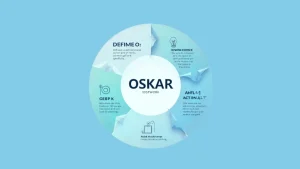Leadership is not merely guiding the team through smooth waters, but steering the ship when the storms hit. But panic leadership is the exact opposite of that ideal. It’s what happens when a leader falls prey to their fears, uncertainties, or stress; that’s when their actions (or inactions) create more chaos than clarity. Picture that manager who suddenly freezes up at the onset of a major crisis or goes way overboard, acting rashly at that very moment when thinking would have produced so much more clarity for their team. This is not a momentary spike in behavior; it deeply affects trust, morale, and organizational success.
Here’s the thing: panic leadership is real and not inevitable. Every leader can learn how to steer their reactions and meet challenges with all poise and composure, no matter how predisposed they might be today. Therefore, this article will discuss what panic leadership really is, why it happens, and most importantly, how it can be overcome. If you’ve ever felt overwhelmed by your leadership role or have witnessed the aftereffects of a panicked response, this guide is for you. Let’s break it down.
What is Panic Leadership?
A leadership panic leads one to lose oneself by declining to be composed. The issue with leaders may involve making hasty wrong judgments under conditions of high-stress situations, displays of certain erratic actions, or doing absolutely nothing at all. For example, at the height of a storm, a captain completely left the steering wheel while the other co-pilots tried vainly to regain a semblance of stability. Instead of visibly projecting the kind of bravery and direction that one would desperately need at times of calamity and chaos, a panicked leader will generally react very emotionally, thereby creating much more confusion than clarity.
Such a reaction essentially indicates a lack of the leader’s stress management. One would always blame everyone else, overreact to petty issues, freeze up in high-pressure situations, or go berserk. These factors dwarf the efficacy of workflow, resulting in lower morale and trust in the single concerned individual and the whole team. Remember that manager who waved a hand once only to alter deadlines and completely changed priorities one minute before the crucial hour with no explanation as to why it changed – someone would scold employees for lacking a minuscule thing in their notice.
Ripples run through the organizations, creating a higher level of anxiety and chaos.
Panic leadership is only a very small part of an extremely large picture. It is usually more indicative of inexperience, poor coping, or even the greatest fear of failing. Behaviors of such kinds must be understood before moving forward on any path to remedying the problem, such as admitting it and apologizing. Establish the line between normal stress responses from dysfunctional but inefficient behaviors that would undermine his effectiveness. Such actions will sour not just the morale and trust of the person but also that of his whole team.

The Psychology Behind Panic Leadership
No more panic-leading. The development of this is rooted in understanding how the natural reaction of the human brain is to stress. When high pressure gets to the limits of human endurance, the amygdala fear center of the brain thrusts itself into dominance by triggering the fight, flight, or freeze response. This occurs automatically as a survival mechanism intended for life-threatening situations but is quite often counterproductive in business.
In a leadership sense, this reflex can be considered as impulsive decision-making (fight), avoidance of responsibility (flight), or total inaction (freeze). For instance, making sweeping, ill-conceived changes to business strategy as a result of plummeting stock prices, by a freeze, and then totally avoiding the critical issue that needed addressing by a manager since it might resolve itself are some consequences of this instinct. These behaviors come from that instinct of survival, which overrides what you’ve associated with logical thinking and long-term planning.
There are more and more specific conditions that aggravate this tendency. A leader who lacks confidence or experience or is afraid of failure is more likely to exhibit stress reactions. Those are the main causes on top of the torturous organizational culture that values results over processes and may unknowingly compel leaders to make quick and reactive decisions. Knowing these triggers would destroy that cycle of panic leadership.
Awareness must first be built along with that simple understanding of these psychological bases to make things better. Understanding how stress plays into decision-making will also serve as a springboard to starting to rewire how leaders react instinctively to thoughtful, deliberate action.
Strategies for Effective Panic Leadership
So, how do you lead effectively when the pressure’s on? Here’s how:
Keep Calm and Collected: Your team expects you to be a source of steadiness. Practice meditation or deep breathing for efficient calm conditions. Think of an early crisis routine that helps balance you and normalize things quick meditation session or review previous achievements to help build confidence.
Decisions Come First: It’s so easy to feel overwhelmed when everything is just so urgent. Tools such as the Eisenhower Matrix could improve your task management by urgency and importance-focus on what matters.
Effective Communication: Transparency becomes your bedmate in trouble. Let your team know what is happening, what you are doing in response to events, and what may be needed from them. Be brief. Be very, very clear.
Delegate Duties: You can’t do everything alone. The specific task will rest in the hands of your team members and trust them to work with it, so that you may focus on higher strategy at work. That way everyone will have the feel of working together toward a vision.
Quick Adaptation: Flexibility is mandatory because an unexpected challenge might strike at a time. You can change your strategy if there’s new evidence that makes your previous approach invalid. Teach your team to adopt a thinking mindset of “problem-solving“; solutions will stand above barriers.
Stay Positive: Optimism is not only encouraging; it is infectious as well. When your employees see you continuing to stand hopeful and focused, they will more likely adopt such an atmosphere around them. Retrospect crises where the organization has emerged stronger.
Reflect and Rewind: Look back on your performance immediately thereafter. What worked? What didn’t? This is what reflection would help do; reconstruct your leadership style to be better prepared for whatever comes next.

Conclusion
Understanding panic leadership and managing it is the very first step of creating a resilient and effective vibrant team environment. The leaders might not be prepared for what happens to them when thrust into pressure-filled situations that may affect morale within the team and the broader organization. However, with an understanding of the psychological preconditions underpinning panic, plus strategies like calmness, effective communication, and adaptability, the leader will be able to take a different route to crisis management.
This, of course, does not mean that importance is irrelevant to leadership. Leadership has to do with weathering the storm and being able to guide others in doing so confidently and clearly through the storm. Seize the moment to reflect, learn, and explore as the leadership of tomorrow will be better positioned and pivoted toward a more resilient, cohesive future. Let’s also unleash the potential inside us as leaders to create these environments where clarity wins over chaos so that we can support both our teams and ourselves even through the toughest times.











